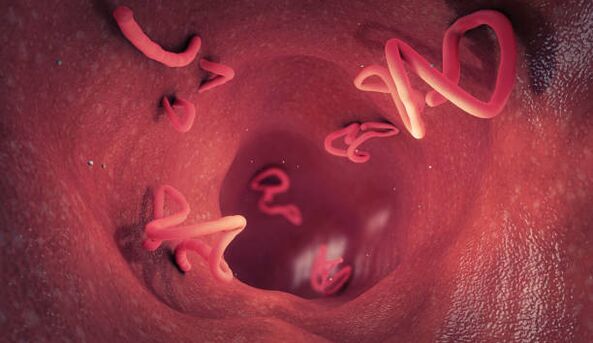Human parasitic diseases (from the Greek parasites - "parasite") are a large group of diseases in the "infectious diseases" section, whose cause is the unicellular and multicellular parasites.

A parasite is a living organism that lives or is in the host's body and receives food from it or at its expense, that is, it leads a parasitic lifestyle. They all know how to live in the human body, some quite imperceptibly, and some can cause serious damage to health.
Agents causing parasitic diseases
There are three main classes of parasites that can cause disease in humans:
Protozoa are microscopic single-celled organisms that can be free-living or parasitic in nature. They are able to reproduce in humans, which contributes to their survival and also allows the development of serious infections from a single organism.
Helminths (Greek helmins - "worms") are large, multicellular organisms that are usually visible to the naked eye during adulthood. Like protozoa, helminths can be free-living or parasitic in nature. In their adult form, helminths cannot reproduce in humans.
Ectoparasites: This term is generally used more narrowly to refer to organisms such as ticks, fleas and lice that attach or hide in the skin and remain there for an extended period of time (weeks to months). Arthropods can cause infection on their own, and can transmit other diseases.
List of parasitic infections: amoebiasis, ascariasis, hymenolepiasis, diphylobotriasis, clonorchiasis, cryptosporidiosis, giardiasis, malaria (imported cases), opistorchiasis, teniarinhos, taeniasis, toxocariasis, toxoplasmosis, trichinocytosis, tricytocytosis, tricytocytosis.
Signs of parasitic diseases.
Its manifestations can be varied and depend on the type and location of the parasite, as well as the level of immunity of the host.
Protozoa most commonly cause diarrhea and other gastrointestinal symptoms. Helminth infections can cause abdominal pain, diarrhea (diarrhea), muscle pain, cough, skin lesions, malnutrition, weight loss, poor coordination of movement and speech, seizures, and many other symptoms, depending on the individual and the severity of the infection. .
Diagnosis and treatment of parasitic diseases
Diagnosis of parasitic diseases includes:
- Clinical blood test.
- Blood test for specific antibodies and parasite antigens.
- Blood smear.
- Fecal analysis for worm and parasite eggs.
- Endoscopic research methods (eg colonoscopy in the case of complex diagnoses).
- Radiography, magnetic resonance imaging (MRI), computed tomography (CT) for severe damage to internal organs by parasites.
The treatment plan will depend on the specific diagnosis, as a rule the drugs are prescribed in the form of pills, sometimes hospitalization is necessary, until the surgical intervention.
Other treatments may also be recommended to relieve your symptoms (diet, water intake).
Prevention of parasitic diseases
Prevention is always easier than cure and there are simple ways to protect yourself.
Do not eat:
- undercooked fish, crabs and shellfish;
- undercooked meat;
- raw aquatic plants;
- raw vegetables that may have been contaminated with human or animal faeces.
Parasites can live in natural water sources, therefore, when swimming:
- do not swallow water;
- prevent babies from defecating in water, taking babies to the bathroom and checking diapers every hour, changing diapers in the bathroom or in the changing area rather than in the pool to prevent germs from entering the pool;
- do not swim or let children swim if they have diarrhea;
- do your mini-inspection (contamination);
- shower for at least 1 minute before soaking in water.
Pets can carry parasites and transmit them to humans. Zoonotic disease is a disease that spreads between animals and humans. Sometimes people with zoonotic infections have no symptoms. Other people may experience symptoms such as diarrhea, muscle pain and fever.
Regular veterinary care will protect your pet and your family. There are simple steps you can take to protect yourself and your family from animal-borne diseases. Make sure your pet is cared for by a veterinarian.
Practice the four rules:






































